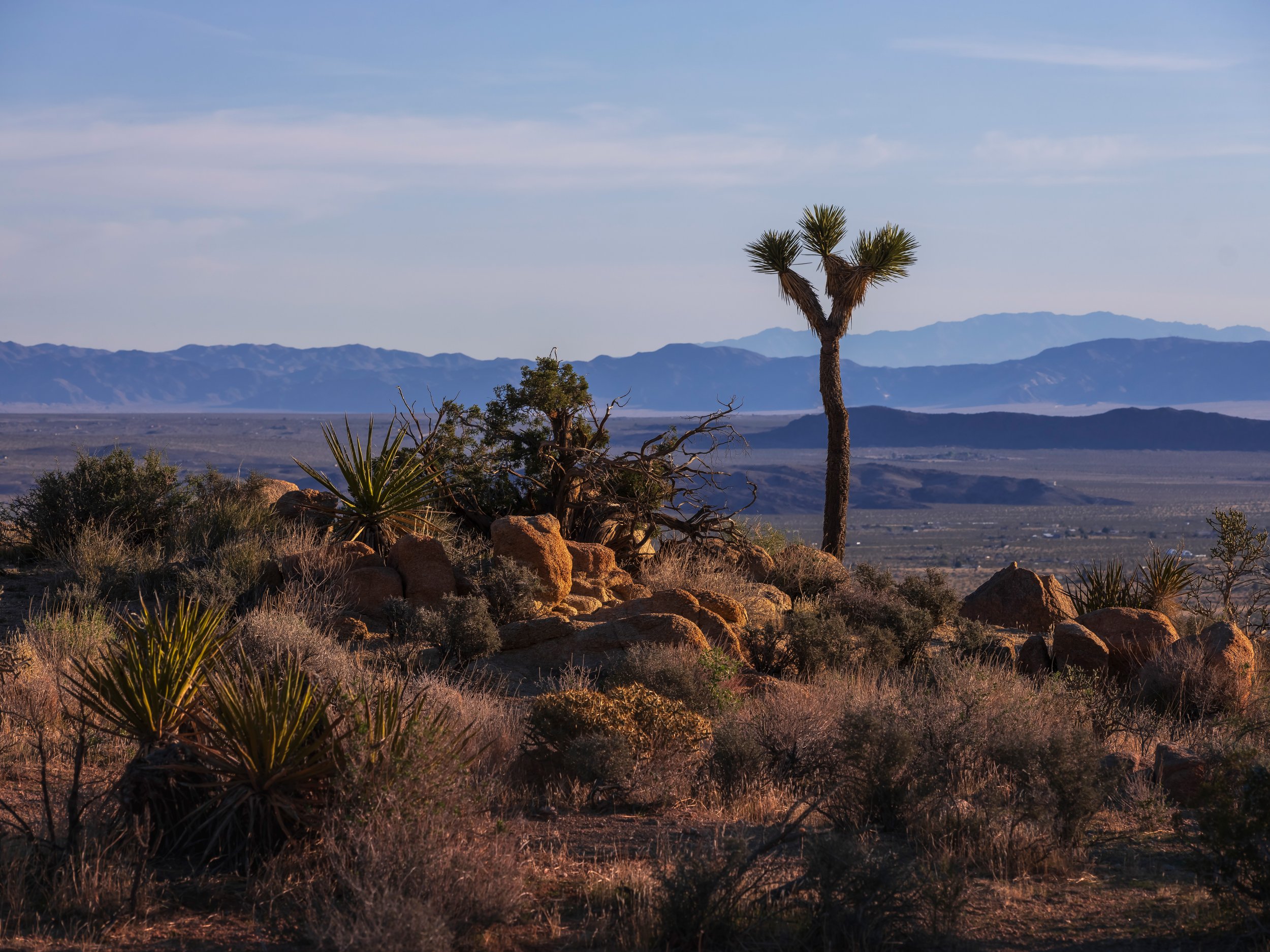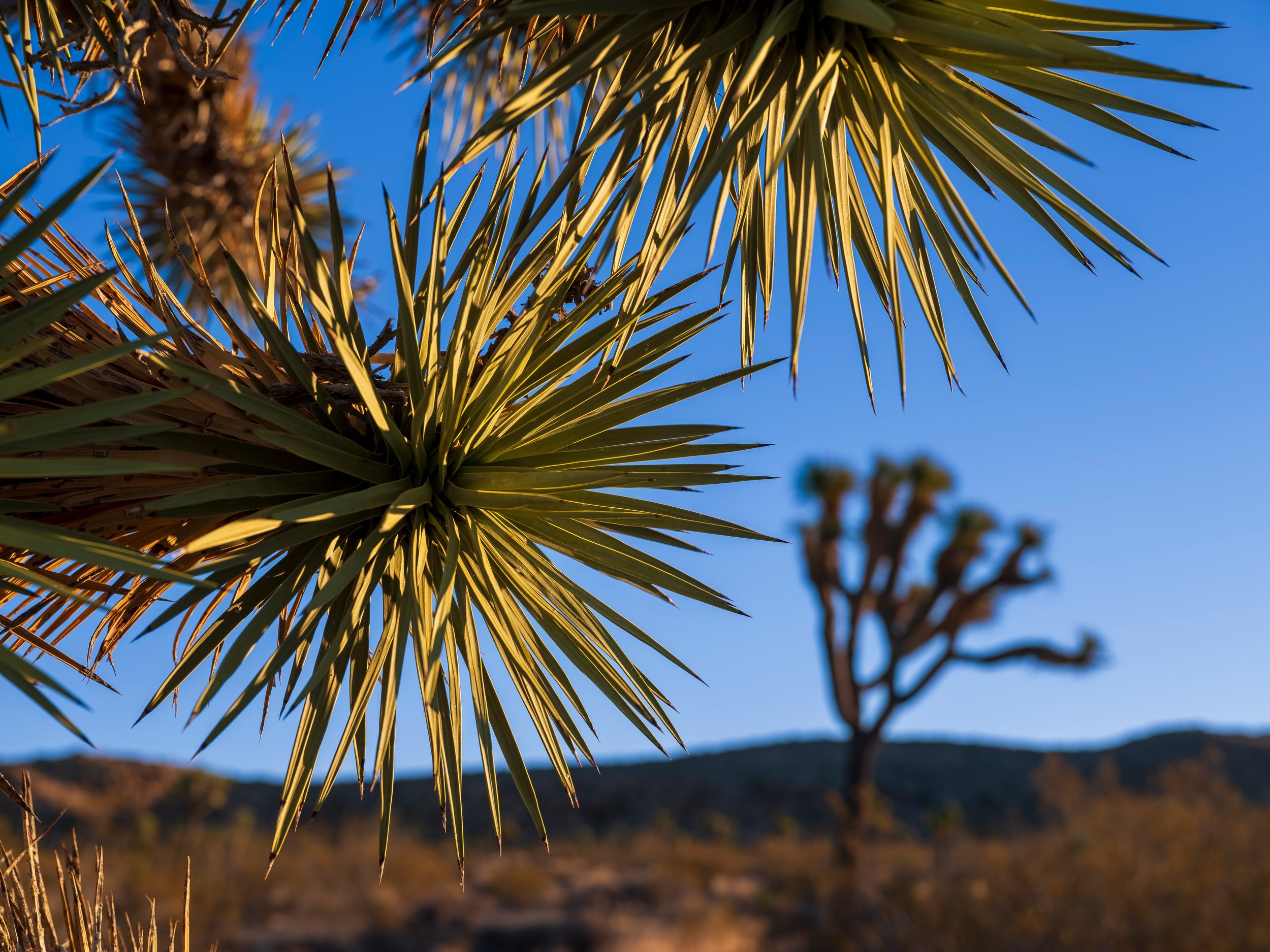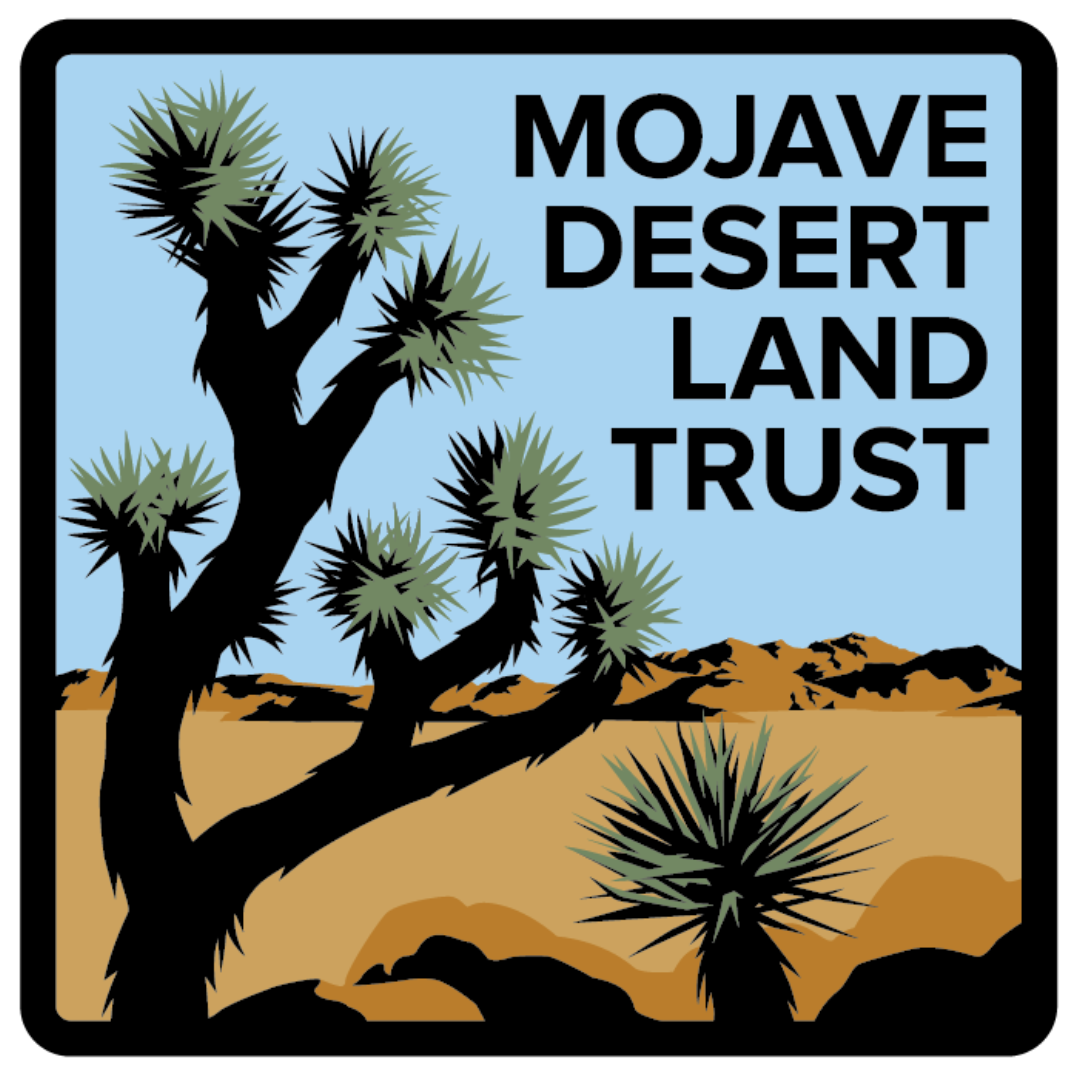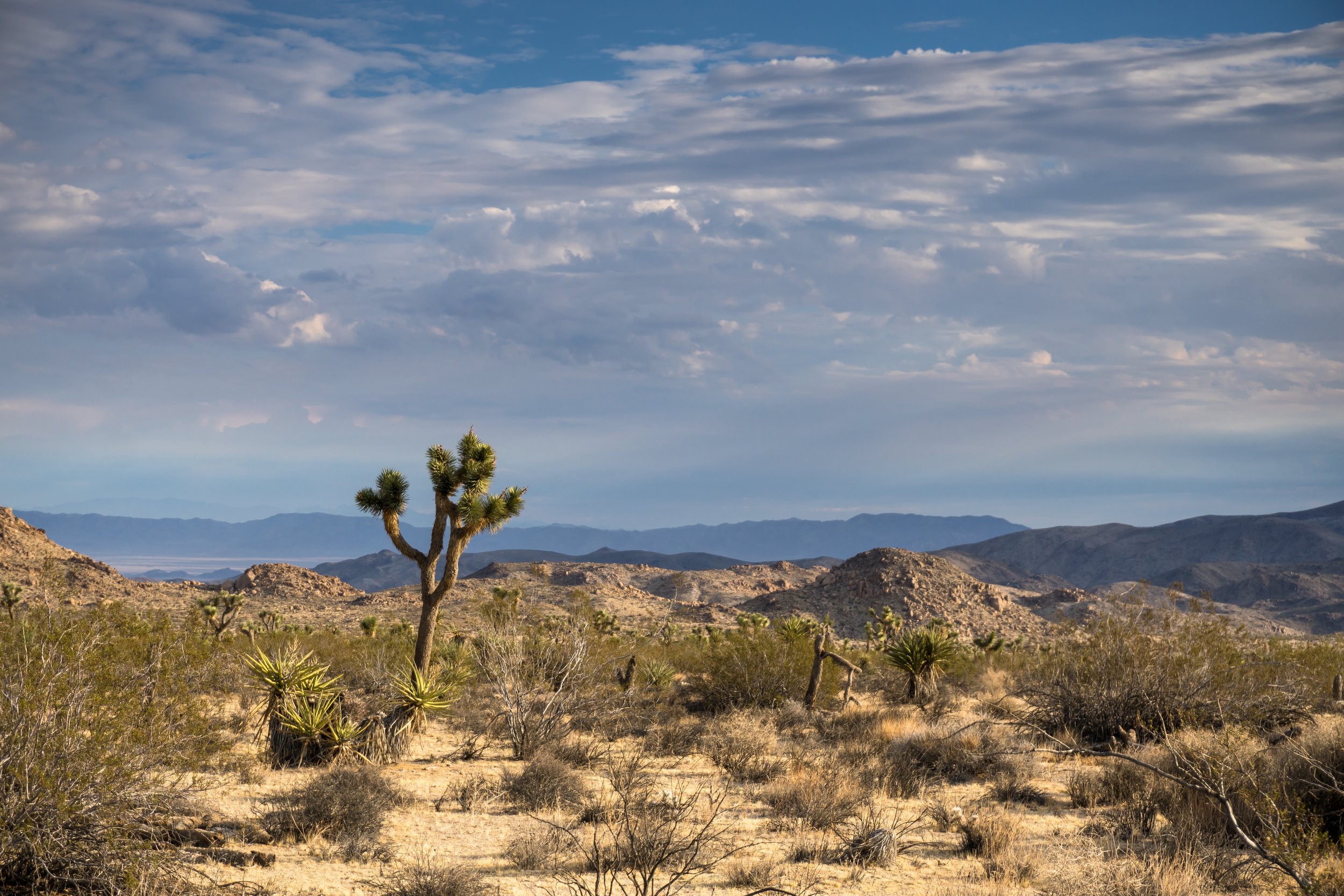
Supporting the Western Joshua Tree Conservation Plan
The California Fish and Game Commission will be meeting on April 16 and 17 to discuss the draft conservation plan for the western Joshua tree.
We’re asking for your help to speak in support of the state’s plan! You can send a message to the Commission ahead of the meeting or call or Zoom in during the meeting. Details for both methods are provided here.
Protecting the western Joshua tree
The Mojave Desert Land Trust is at the forefront of conservation efforts to save the iconic western Joshua tree. We are moving fast to save this declining species through two significant initiatives. We are leading the Joshua Tree Conservation Coalition, a powerful new alliance of agencies, land managers, Tribes, and researchers tackling the need for swift action and strong partnerships in combating threats to this declining keystone species. We are also supporting an essential research project to study the health of every population of western Joshua trees in California for the first time, a data source that will be critical in guiding policy and conservation for years to come. This bold action builds on our experience mobilizing support for permanent protection of the western Joshua tree. Over the last few years, we have built community support for listing the species under the California Endangered Species Act and played a key role in fighting for the Western Joshua Tree Conservation Act – California’s first such protection of a climate-threatened species.
Why does the western Joshua tree need protection?
Several peer-reviewed studies show that much of the Joshua tree’s habitat may be climatically unsuitable at the end of the century under shifting temperature and precipitation patterns projected by certain climate scenarios.
Despite this evidence, both the state and federal governments have so far declined to formally list the species as threatened under the Endangered Species Act.
A number of threats point to a reduction in range for this iconic species:
-
A 2012 study estimated that a temperature increase of 3°C – with no change in precipitation – would reduce suitable habitat for Joshua trees by 90% (Barrows and Murphy-Mariscal). This temperature increase corresponds with a projected high emissions scenario that is well above current levels.
Even under a best case scenario in which emissions are reduced to zero by 2080, the mean annual temperature within Joshua Tree National Park is projected to increase by 1.5°C (Gonzalez, 2019).
A temperature increase of only 1°C is estimated to reduce suitable Joshua tree habitat by one-third (Barrows and Murphy-Mariscal, 2012).
-
A 2019 study looked at several possible outcomes for Joshua tree habitat. In the best-case scenario, major efforts to reduce heat-trapping gases in the atmosphere would save 19% of the tree habitat towards the end of the century. In the worst case, with no reduction in carbon emissions, the park would retain a mere 0.02% of its suitable Joshua tree habitat, leading to “an almost complete elimination of Joshua trees from the park”. (L. Sweet, Congruence between future distribution models and empirical data for an iconic species at Joshua Tree National Park, 2019).
-
Climate change presents an additional threat to the Joshua tree in the form of wildfire. Atmospheric carbon dioxide accelerates growth of invasive grasses like mustard and brome. In undisturbed Mojave ecosystems, bare soil separates vegetation with low incidence of severe wildfire. Field research in Joshua Tree National Park found that nitrogen deposition from vehicles has increased grass growth at two of four sites, significantly increasing wildfire risk.
One of the most evident risks of wildfire threat to the Joshua tree took place in Mojave National Preserve in the world’s largest Joshua tree forest. In August 2020, 1.3 million eastern Joshua trees (Yucca brevifolia var. jaegeriana) burned in the 43,000-acre Cima Dome wildfire.
The combination of increased temperatures and variable precipitation attributable to climate change, spread of invasive species, and increased human activity favor opportunities for wildfire and increased Joshua tree mortality. Young trees under one meter in height are particularly vulnerable to extreme fire temperatures as their formative plant tissue is close to the ground.
-
Local jurisdictions in the western Joshua tree range have minimal protective measures in place and often provide exemption for single family homes. Threats can be even greater on private lands, which account for 40% of western Joshua tree habitat. Only a small fraction of private land retains any kind of protections for this vulnerable species from development. With a growing list of threats stacked against shrinking population projections, virtually all suitable habitat may be lost in the coming decades without strengthened protections for the western Joshua tree.
The Joshua Tree Conservation Coalition
Initiated by the Mojave Desert Land Trust and funded by California’s Wildlife Conservation Board, the Joshua Tree Conservation Coalition provides the collaborative interagency support needed to protect this keystone species from increased wildfire activity and other threats from the changing climate.
The Western Joshua Tree Conservation Act
Learn what the Western Joshua Tree Conservation Act means for the protection of the species and find information about reporting violations and permitting.

With your support, we can accelerate the pace of Joshua tree conservation and confront the urgent threats facing this keystone species head-on. Help us show our leaders that there is broad support for swift and bold action to protect the species.



